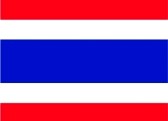All Categories



The Oldest Ethiopian Bible: Translating 19 Omitted Apocryphal Books from the Protestant Ge'ez Bible Canon into English, Including Sirach, Enoch, Angels, Watchers and Giants
Share Tweet
Get it between 2025-08-21 to 2025-08-28. Additional 3 business days for provincial shipping.
*Price and Stocks may change without prior notice
*Packaging of actual item may differ from photo shown
- Electrical items MAY be 110 volts.
- 7 Day Return Policy
- All products are genuine and original
- Cash On Delivery/Cash Upon Pickup Available








About The Oldest Ethiopian Bible: Translating 19 Omitted
The Ethiopian Bible is the world's oldest Bible, and it contains ancient, forgotten apocryphal writings. The whole body of work left out of the Protestant Bible's canonical text is featured in this uncommon volume. You will find the following apocryphal works in this special edition: A backgrounder and historical primer for reading the works The three Meqabyan books are MEQABYAN I, II, and III in lyric Rastafari version of Jamaican patois The Wisdom of Solomon The Ethiopian Enoch's Books. Additionally, Apocryphal Sections of Noah's Book Are Not Included in the Protestant Canon. Esdras The Epistle of Jeremiah; The Prophecy of Jeremiah Baruc The Additions to the Book of Esther Psalm 151 The Wisdom of Jesus Son of Sirach Ecclesiasticus The Book of Tobit The Book of Judith Bel and the Dragon Susanna The Prayer of Azariah The Prayer of Manasseh, and Apocryphal Ethiopic Prayers are also included. Book of Adam and Eve and the conflict of Satan These are texts from the distant past that were penned in the archaic and traditional Ethiopian language, Ge'Ez, on goatskin. In this English edition, it is brought back to light. The text and graphics in this edition serve the following purposes: 1. Describe the historical setting. 2. Provide reading direction for the translated text Why is the Ethiopian Bible not being discussed right now? Why have these writings been gradually lost to history?


























